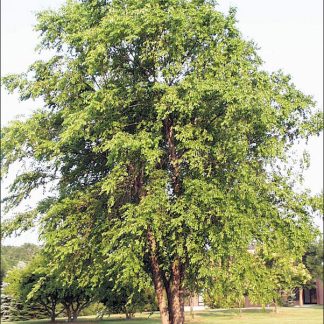Description
Japanese walnut (Juglans ailantifolia) is also known as heartnut, because of the adorable shape of the walnuts, which can be round to heart-shaped. This tree is native to Japan, but was introduced to the United States in the 1860s.
The male flowers of the Japanese walnut appear as yellow-green catkins and the females have pink or red pistols. The flowers appear after the leaves, typically in May. Fruit grows in clusters of 4-10 nuts, up to two inches in diameter. The bark of the Japanese walnut is typically a light grey color. It is closely related to the butternut, but more resistant to bacterial canker. These nuts are a great snack for wildlife, including squirrels and bears. The husks of the nuts can also be used to make a natural yellow dye.


